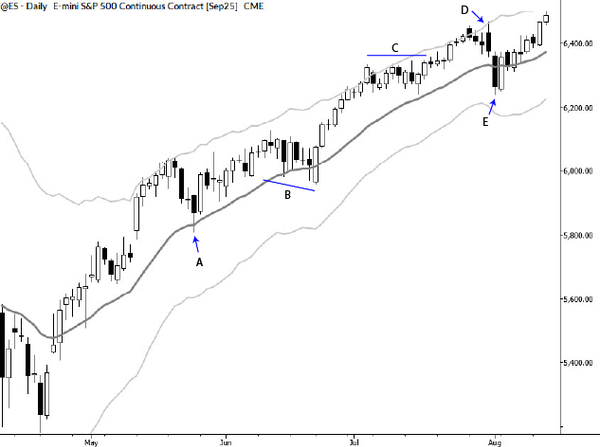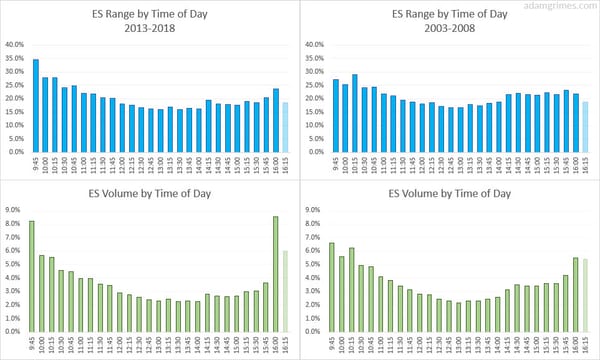So You Want to be a Trader? (Reading list 1/3)
My involvement with markets is nearing the two-decade mark, and one thing that never seems to change is the number of courses, books or services sold to the public that promise easy profits if you can only learn a specific system or pattern. My message is very different: I believe that trading is extremely difficult. (Elegant minimalism and apparent simplicity are possible, but this is a hallmark of mastery. The road there is very long.) Markets are ultra-competitive and only the best succeed. Most things people think work in the markets actually do not work, and most aspiring traders are wasting their time going down many blind alleys. The bottom line is that you cannot expect to succeed in the marketplace without a firm foundation. Can you imagine a world where surgeons are not taught basic science and anatomy? Or where engineers are allowed to immediately focus on their specialty without learning math and physics? Why do we not train traders the same way, by building up a background of knowledge in related and supporting fields?
There is actually a school of thought that says that academics are not important for traders. This is probably reflective of the old environment on the floor, where a significant part of the trader's edge was being tall, having a loud voice, being present every day, and making friends with the brokers he stood close to every day. Or perhaps the early days of electronic markets when anyone with a fast internet connection had an inherent edge. Those days are gone; I have seen many floor traders on both the Chicago and New York exchanges struggle to make the transition to the screen, and most have been remarkably unsuccessful. (If you haven't seen the documentary Floored, it's a sobering and somewhat depressing dose of reality.) It takes real skill to take money out of today's markets.
People ask me for book recommendations all that time, and I have a few go-to standards. A few months ago, I started thinking about what I would actually consider to be basic knowledge needed to become a trader, and started to build a reading list that would support an early, comprehensive education for the beginning trader. As I looked around, it became obvious that no one was thinking like this. I assembled the list, and actually hesitated to publish it because this may be an unpopular message.
You may raise the valid objection that there are many traders who have made a lot of money without having this background knowledge. This is true, but let me point out a few counterarguments: many of those traders had success in unusual, inefficient environments that do not exist anymore. (E.g. the floor, the SOES bandits, early arbitrage opportunities in options markets, etc.) Secondly, if you are a developing trader you do not know where your niche will be. You may think you want to daytrade volatile stocks, but what if you discover trading inefficiencies in the volatility surface is a better fit? Shouldn't you begin your career and your studies by building a foundation that will support whatever approach to trading you want to explore? If you think the answer to those questions is yes, then here is a list of books and subjects that I believe you should master within the first three years of your trading career:
Basic Requirements
Accounting: Accounting is the language of business. You do not have to be a CPA, but you must be able to read financial statements, understand basic taxation issues, understand cash flows, and begin to understand some of the subjectivity and choices that go into the process of preparing statements. The next level of understanding is to begin to think about what adjustments need to be made to statements for basic model-building, and perhaps to begin to understand some of the issues that play into quality of earnings. The goal is not to be an analyst, but to at least begin to speak their language. A couple basic accounting courses would be a good idea here, but, barring that, consider working through a standard text like Fundamental Accounting Principles

, focusing on exercises and applying those to current 10-K’s. This is a discipline you learn by doing; unless you spend time doing exercises and analysis on your own, it will be hard to master this subject.
Basic Math: Though many people approach the market like a math problem, my experience has been that the mathematical knowledge needed is surprisingly limited. In most market applications, simpler tools tend to be more robust and advanced mathematical tools have limited application in most types of trading. You do need to be very comfortable with algebra, and should be able to read basic formulas, and have a good understanding of graphing basic equations—all high-school level math. It is also critically important that you speak percentages and growth rates like a second language. (To test yourself, assume you lose 20% of your trading capital. What percentage return is required to recover that loss? If you said 20%, that’s a problem.) You also should be comfortable reading basic equations, and thinking in a logical way. Remember, the point of all of this work is to learn a language that will help to shape your thinking.
Probability: Traders must have a deep, intuitive understanding of probability. Fortunately, the concepts of probability are not complicated, and a few fundamentals will get you far. Unfortunately, they are not intuitive for most students, especially at first. Probability Without Tears: A Primer for Non-Mathematicians - Derek Rowntree is a very accessible little book that illustrates the basic ideas with many good examples. If you want to dig deeper (and you should), An Introduction to Probability Theory and Its Applications, Vol. 1 - William Feller is still the standard work— you won’t find it easy going, but it is elegant and beautiful, and is appropriate for self study if you’re dedicated.
Statistics: After probability, a good grasp of statistics is the next most important mathematical skill for a trader. You should at least understand the problems and the right questions to ask in any situation. For instance, if someone tells you that a candlestick pattern has an “85% success rate”, there are a series of questions that should follow very logically. Faulty statistics are very common in the trading literature, the blogosphere, and in the major media--your only protection is a strong proficiency in this subject. For a basic introduction, Statistics - Freedman, Pisani and Purves is probably a good place to start. For a lot of market work, non-parametric statistics are often the right choice, or at least a good alternative. If you only have a background in parametric statistics, you will be surprised to discover that non-parametrics are simpler and more intuitive. Practical Nonparametric Statistics - Conover is a good teach-yourself book. If you already have the background and just want a reference, then these two books should be on your shelf: All of Statistics: A Concise Course in Statistical Inference and All of Nonparametric Statistics, both by Wasserman. (Warning: The Wasserman books are not teach-yourself manuals. They are references only.)
Elementary Finance: Important to have a good grasp of essential fundamentals like time value of money and Modern Portfolio Theory. No matter how you trade or how you approach markets, you need to understand Finance theory because this is what really drives markets. Stocks, for instance, do not make significant moves because of some technical pattern like a head and shoulders or a trendline breaking. Stocks make big moves because firms and investors have made allocation decisions based on a number of fundamental, narrative, technical, or macroeconomic factors. Unless you understand the basics, it’s hard to pass Go. Principles of Corporate Finance is pretty much the standard text, and for good reason.
Excel proficiency: Honestly, I’m not sure how you develop this except by doing. Excel is a curse and a blessing. It is easy to use and on practically every computer in the world, so we end up doing a lot of things in Excel that should not be done in Excel. For instance, it is not really suitable for data analysis, but we all do some data analysis in Excel. As a benchmark, you should be able to do everything you need to do in Excel without ever touching a mouse (seriously). Proficient Excel users know that keyboard shortcuts are easily 4 or 5 times as fast as the same operation with the mouse. To test yourself, try this: Go to Yahoo Finance and download daily data for any stock. Once you’ve done that, time yourself on the following operation: create a new column that is the range (high - low) for each day, and then sort the sheet by that column. You should be able to do that in well under 10 seconds. If not, work to consciously create scenarios where you can develop these skills. Most professionals build Excel proficiency on the job or in the process of doing analysis and/or building models.
This is the basic, foundational knowledge for the skills of trading and analysis. The next post and the last post in this series will build to a more market-specific knowledge set.



